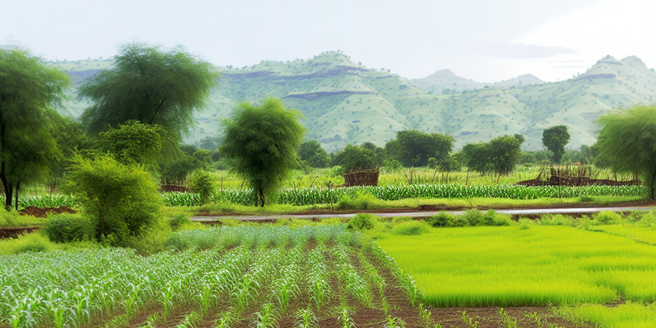
Understanding the Concept of Monsoons
Monsoons, a seasonal wind system that brings substantial rain, are integral to many ecosystems. They originate from a change in temperature between the sea and land. This temperature fluctuation creates a pressure difference, triggering the wind system. During the hot summer months, the land heats up faster than surrounding oceans, causing air to rise over the land and produce thunderstorms. As a result, moist ocean air rushes in to replace it. This process is known as monsoon circulation. This rush of moist air is characterized by heavy, often almost daily rain showers, causing torrential rain.
Significance of Monsoons: An Ecological Perspective
Monsoons significantly impact local ecology and global weather patterns. These seasonal wind patterns, characterized by substantial shifts in wind direction and ensuing precipitation changes, are a crucial part of climate dynamics worldwide. Their arrival, duration, and intensity can immensely influence crop yields and play a vital role in agriculture, with any irregular patterns potentially triggering droughts or floods, leading to substantial agricultural losses.
Monsoons also play an indispensable role in global heat distribution, working with ocean currents to transfer heat from the equator towards the poles and maintaining global climatic balance. They go beyond influencing just localized ecological changes; their pivotal role in agriculture and global climatic balance underscores their significance as a driving force behind the Earth’s climate system.
Emergence and Evaluation of Global Warming
Global warming, increasingly recognized, refers to a substantial rise in Earth’s average temperature mainly caused by human activities such as deforestation and the burning of fossil fuels that increase greenhouse gas emissions. Deforestation, primarily for urban development, agriculture, and logging, has a negative impact on our planet’s health, while reliance on non-renewable energy sources like coal, petroleum, and natural gas for electricity and transportation is a major source of greenhouse gas emissions. Greenhouse gases, such as carbon dioxide, methane and nitrous oxide, can trap solar radiation within the Earth’s atmosphere, creating the ‘greenhouse effect,’ and the higher the level of these gases, the more heat is trapped. This continual warming leads to significant, unfavorable alterations in our global climate patterns, including frequent extreme weather events, rising sea levels, shifting wildlife populations and habitats, and increased incidence of drought and wildfires, emphasizing the urgent necessity to take proactive measures against global warming.
Interrelation of Global Warming and Monsoon Patterns
Global warming is causing rising temperatures worldwide that could distort established monsoon patterns and trigger unforeseen impacts on environments and economies. This warming increases the temperature disparity between the ocean and the land, which could alter typical monsoon behavior, characterized by seasonal wind shifts that pull moisture from the ocean to the land. The result could be heavier, less predictable rainfall leading to devastation. Extreme weather changes can lead to mass species extinction as ecosystems struggle to adapt, increased flooding, land erosion, and disruption of habitats. Industries like agriculture and fishing, which depend on predictable monsoon patterns might experience unprecedented setbacks, leading to widespread food shortages, price inflation, and detrimental socio-economic consequences. Global warming’s potential distortion of monsoon patterns underlines the urgency to combat climate change and mitigate its catastrophic effects on our environment and global economies.
Impact of Weakening Monsoons on Global Agriculture
Alterations in the intensity of monsoon seasons can severely affect global agriculture and food security, as they’re crucial for crop production and a decrease in their strength can jeopardize harvests worldwide. These rainfalls are vital for irrigation and a minor reduction can significantly affect crop yields, result in a reduced volume of harvested crops disrupting local economies due to increased food prices and cause economic uncertainty, especially among the economically vulnerable sectors. Changes can also increase the potential for famine in regions already prone to food scarcity, reduce food sources, increase hunger and nutrition-related diseases, and complicate nations’ attempts to meet nutritional needs. Consequently, changes in monsoon strength have serious implications for food production and security, global markets, and the most vulnerable global populations, underscoring the need for monitoring these weather patterns and developing sustainable agricultural practices.
Future Predictions: Implications of Continual Global Warming
Unchecked global warming could bring major transformations like changes in monsoon patterns, intensifying extreme weather events and their far-reaching implications. These changes can significantly affect major weather disruptions like droughts and floods, posing grave threat to human habitats. The escalated intensity of such calamities can disrupt human life on a large scale, making many regions unlivable and causing significant displacement of people globally. Additionally, climate shift could drastically impact agricultural productivity, with crops being destroyed due to extreme weather conditions and threatening global food security. Thus, if this trend continues, we can look forward to extreme weather events, an increased prevalence of droughts and floods, threats to human habitats, and impacts on global food supply due to diminished agricultural productivity. Timely measures to mitigate these potentially catastrophic impacts are crucial.
